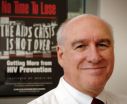(Press-News.org) Global wildlife is facing an unprecedented threat from natural disasters exacerbated by climate change, warn scientists in a paper published in Trends in Ecology and Evolution.
Hurricanes, droughts, flooding and wildfires are predicted to increase in frequency and severity – but despite being able to spot human populations at risk, there is currently no mechanism for identifying vulnerable animal populations.
Now scientists from the Zoological Society of London (ZSL) have come up with a method to identify populations likely to experience drastic changes in their population size when faced with extreme events. By assessing three separate factors – sensitivity, exposure and adaptability – scientists will be able to predict which species have a chance of bouncing back from natural disasters, and which species might struggle to recover.
"As climate change leads to more frequent and severe natural disasters, we need to identify animals at risk of being washed away in a flood, or destroyed by wildfire. We can then prioritise and adapt current management practices to guarantee the survival of those vulnerable populations," says Eric Isai Ameca y Juarez, lead author from ZSL.
Spotting vulnerable populations can be tricky, as what might be a catastrophe for some species could be good news for others. In France in 1999, hurricane Lothar led to an increase in the availability of winter food for roe deer. However, two years later in Belize, more than 40 percent of the black howler monkey population was wiped out when hurricane Iris destroyed their rainforest habitat.
Dr Nathalie Pettorelli, senior author from ZSL says: "Extreme natural events represent a growing threat to biodiversity, and this might be particularly true for populations already under pressure due to habitat degradation or overexploitation. We propose a way to acknowledge this growing threat and carry out vulnerability assessments, in the hope that these will be taken into account when evaluating species extinction risk".
The proposed method will support previous work to assess species vulnerability to climate change and enable scientists to quantify the impact of increasing occurrence and severity of extreme events on animal populations.
###
Notes for Editors
'Natural population die-offs: causes consequences for terrestrial mammals' will be published early online in Trends in Ecology and Evolution at 16:00 on Thursday 22 December 2011 (DOI: 10.1016/j.tree.2011.11.005). Advance copies of the paper are available on request from the ZSL press office.
Founded in 1826, the Zoological Society of London (ZSL) is an international scientific, conservation and educational charity: the key role is the conservation of animals and their habitats. The Society runs ZSL London Zoo and ZSL Whipsnade Zoo, carries out scientific research in the Institute of Zoology and is actively involved in field conservation in over 50 countries worldwide. For further information please visit http://www.zsl.org
A scientific event entitled 'Extreme natural events: an overlooked driver of biodiversity loss?' will take place on Tuesday 12 March 2012, 18:00 – 19:45 at the Zoological Society of London as part of ZSL's Communicating Science series. For further information please visit http://www.zsl.org
Unnatural disasters
2011-12-23
ELSE PRESS RELEASES FROM THIS DATE:
NIH researchers uncover clues related to metal-on-metal hip implants
2011-12-23
A new study, bringing together an interdisciplinary team of physicians and engineers from the United States and Germany, made a surprising finding about implants used in hip replacement surgery: Graphite carbon is a key element in the lubricating layer that forms on metal-on-metal hip implants. The lubricant has more in common with the lubrication of a combustion engine than that of a natural joint. The study was funded by the National Institute of Arthritis and Musculoskeletal and Skin Diseases (NIAMS), part of the National Institutes of Health.
Made possible by an ...
Carlsbad Mayor, CDOD: Positive News About WIPP 2012 Budget
2011-12-23
Members of New Mexico's congressional delegation have shown their strong support of the Waste Isolation Pilot Plant's safety record and operational success by fighting to keep the Department of Energy facility sufficiently funded.
The Waste Isolation Pilot Plant, or WIPP, is the Department of Energy's underground repository for defense-generated, transuranic (TRU) waste. Since WIPP opened in 1999, more than 10,000 shipments of TRU waste have been permanently disposed of in salt beds 2,150 feet below the surface. WIPP is located about 26 miles outside of Carlsbad, New ...
'Nanoantennas' show promise in optical innovations
2011-12-23
WEST LAFAYETTE, Ind. – Researchers have shown how arrays of tiny "plasmonic nanoantennas" are able to precisely manipulate light in new ways that could make possible a range of optical innovations such as more powerful microscopes, telecommunications and computers.
The researchers at Purdue University used the nanoantennas to abruptly change a property of light called its phase. Light is transmitted as waves analogous to waves of water, which have high and low points. The phase defines these high and low points of light.
"By abruptly changing the phase we ...
New Dabota Chairs and Skidmore Chairs From Rattanland
2011-12-23
RattanLand, a Company specializing in the import and export of home furniture, has new products to offer to its customers worldwide - Dabota Chairs and Skidmore Chairs.
New Skidmore and Dabota Chairs
The Company is proud to announce two new products that have been added to its already impressive product range - Skid and Dabota chairs.
Skidmore chairs are classic looking chairs that come with a simple design. There are no armrests, and the chairs sit on four legs each. These chairs are ideal for the outdoor garden or porch.
Dabota chairs also come in a simple ...
Blood progenitor cells receive signals from niche cells and the daughter blood cells they create
2011-12-23
Maintaining balance is crucial. In Drosophila, the common fruit fly, the creation and maintenance of the blood supply requires such balance.
UCLA stem cell scientists have now uncovered that two-way signaling from two different sets of cells is necessary for that balance, both to ensure enough blood cells are made to respond to injury and infection and that the blood progenitor cell population remains available for future needs.
The stem cell-like blood progenitor cells – which contribute to the cells of the adult fruit fly's blood supply – receive signals from cells ...
Defending the genome
2011-12-23
WORCESTER, Mass. – Small, mobile sequences of DNA left over from viruses, called transposons or "jumping genes" because of their ability to move around the genome, pose a significant threat to the genetic integrity and stability of an organism. Considered genetic parasites, these transposable elements are believed to comprise as much as 50 percent of the human genome. Because of the damage transposons can do to an organism's DNA, an immune-like response has evolved to turn off, or silence, these mobile genetic elements.
New research published in the journal Cell by the ...
UNC HIV prevention research named scientific breakthrough of the year
2011-12-23
CHAPEL HILL, N.C. – The HIV Prevention Trials Network 052 study, led by Myron S. Cohen, MD of the University of North Carolina at Chapel Hill, has been named the 2011 Breakthrough of the Year by the journal Science.
HPTN 052 evaluated whether antiretroviral drugs can prevent sexual transmission of HIV among couples in which one partner has HIV and the other does not. The research found that early treatment with antiretroviral therapy reduced HIV transmission in couples by at least 96 percent.
The study was funded by the National Institute of Allergy and Infectious Diseases, ...
Built-in 'self-destruct timer' causes ultimate death of messenger RNA in cells
2011-12-23
December 22, 2011—(BRONX, NY) —Researchers at Albert Einstein College of Medicine of Yeshiva University have discovered the first known mechanism by which cells control the survival of messenger RNA (mRNA) —arguably biology's most important molecule. The findings pertain to mRNAs that help regulate cell division and could therefore have implications for reversing cancer's out-of-control cell division. The research is described in today's online edition of the journal Cell.
"The fate of the mRNA molecules we studied resembles a Greek tragedy," said the study's senior ...
Bacteria battle against toxic fluoride
2011-12-23
Regular use of fluoride-containing toothpaste and mouthwash has long been known to strengthen the enamel on teeth. But new research by Howard Hughes Medical Institute (HHMI) scientists finds that fluoride also has dramatic effects on bacteria inside the mouth -- including those that form plaque and can cause cavities.
HHMI researcher Ronald Breaker of Yale University has discovered the cellular chain of events that occurs inside a bacterium after it encounters fluoride in its environment. His team's findings reveal that many bacteria try to fend off fluoride – which the ...
Second Annual Holiday Fashion Show Benefit in New York City
2011-12-23
Long Island Exchange columnist Cognac Wellerlane interviews celebrities during a benefit for kidney transplant awareness.
On Tuesday December 6th an organization called the Flood Sisters hosted an annual Holiday Fashion Show Benefit to support their national kidney foundation. The organization, started by three sisters, is designed to support those willing to donate kidneys as well as those awaiting transplants. They believe that no one should have to suffer through painful treatments while waiting for an expendable organ.
The event was held at the Scandinavia House ...

